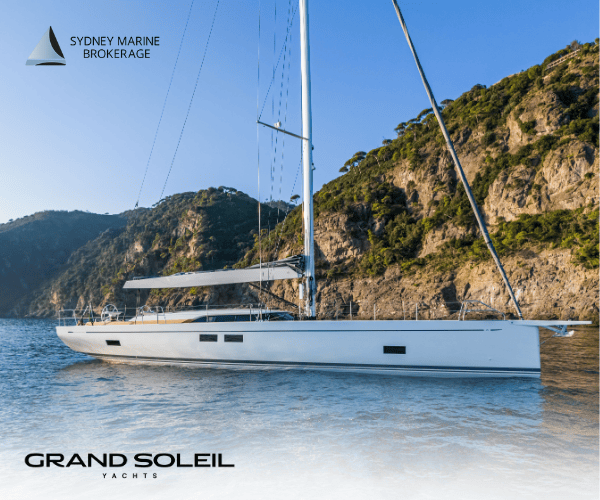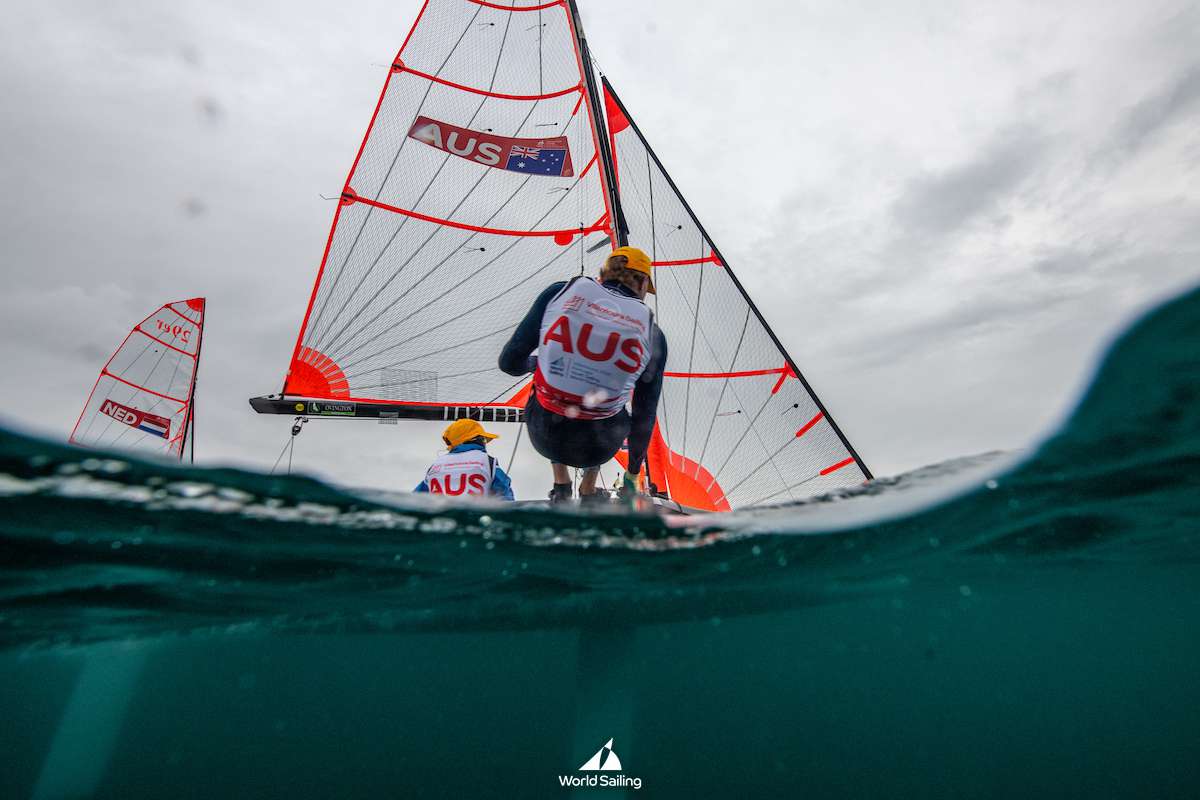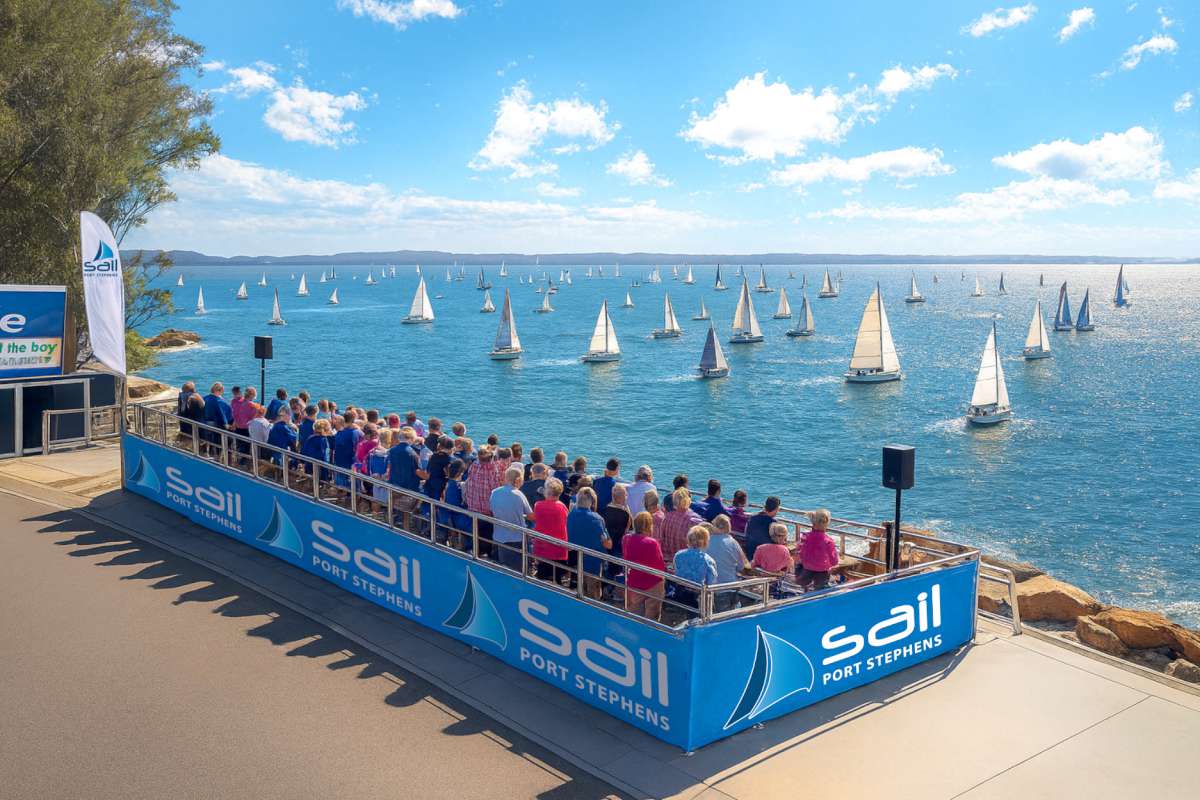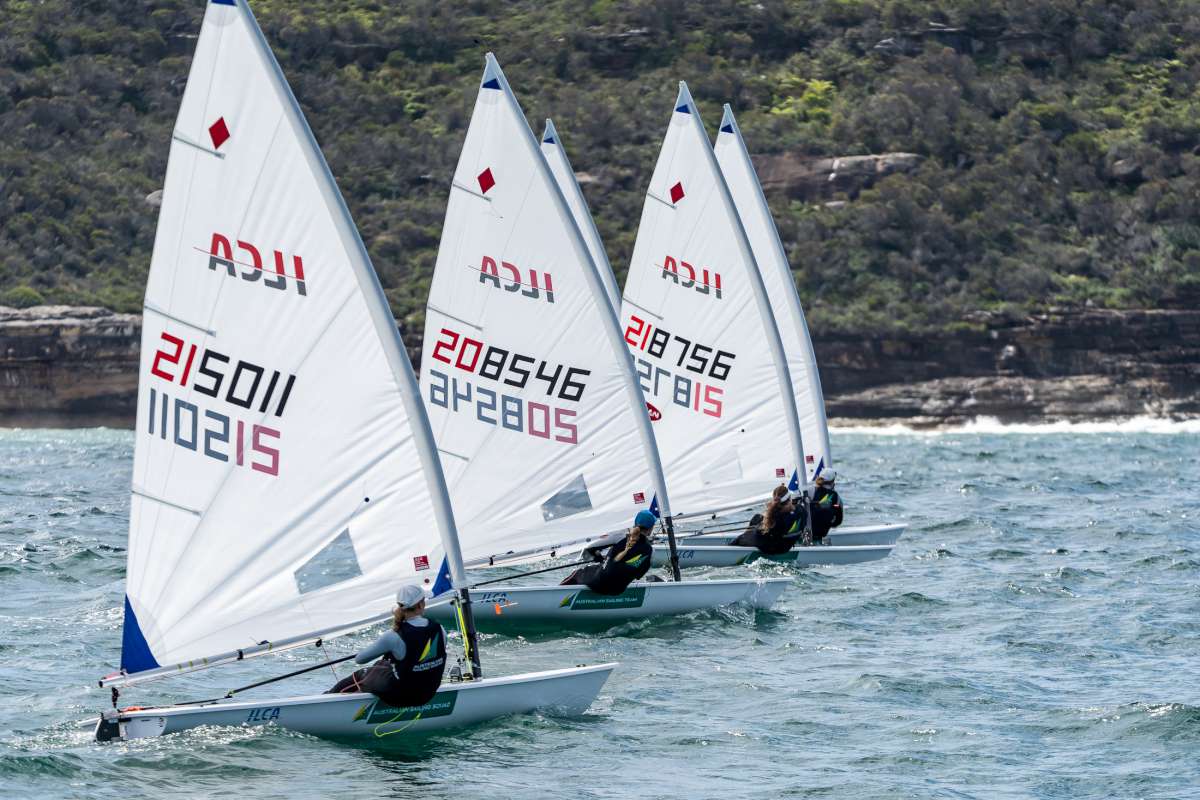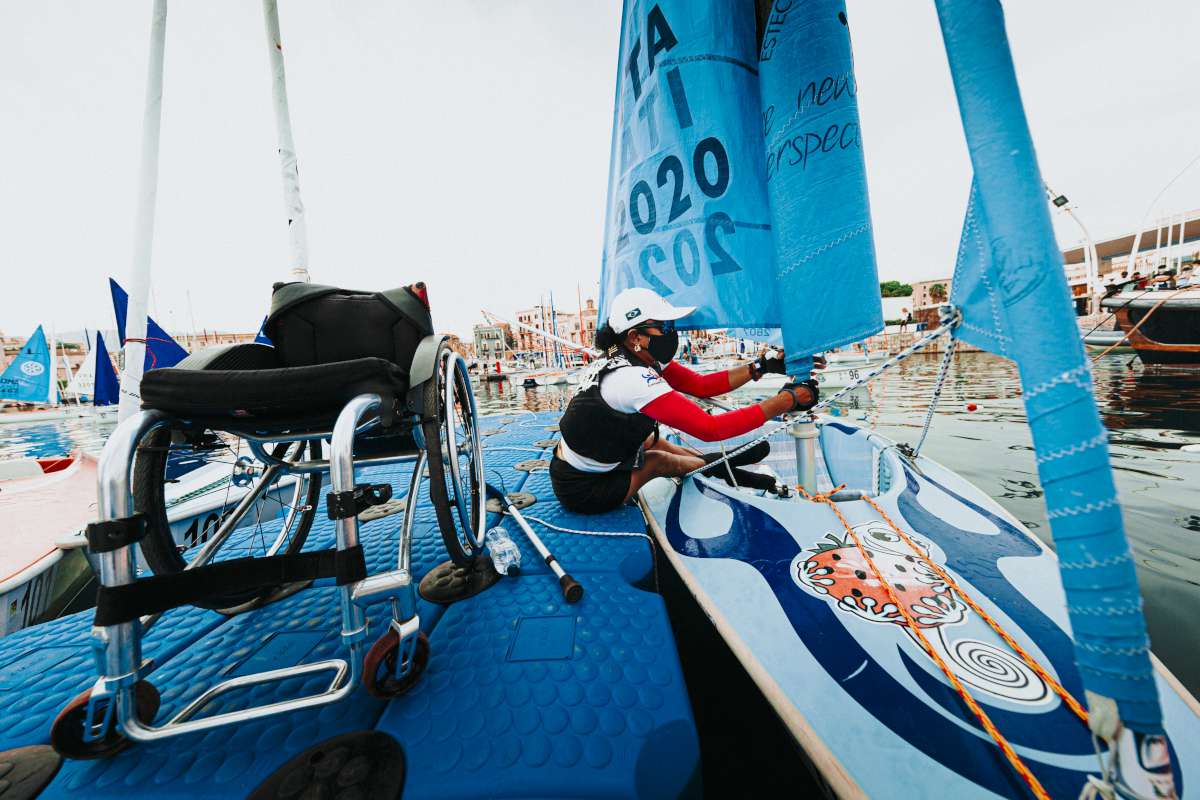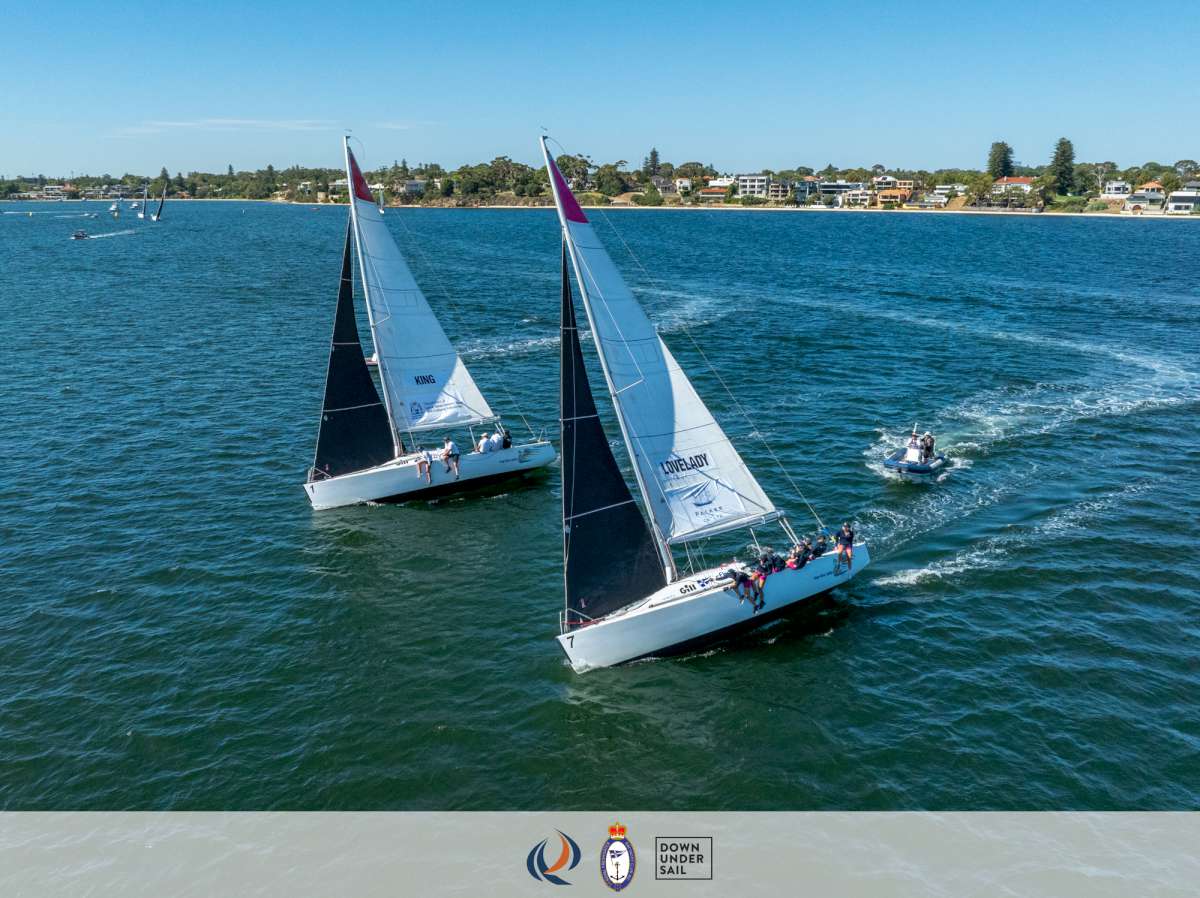PRACTICALITIES BY ANDREW BRAY
To get the best out of your humble tender it's best give some thought into its many uses before you buy.
A tender’s routine role is to carry people, gear, and supplies to and from the yacht but there is more uses if you consider carefully. Choice is constrained by many factors but should take into account that the tender might also need to carry and deploy a yacht’s second anchor to windward in bad weather and possibly even serve as a lifeboat. No little boat can properly fulfill all these roles and yet by definition a tender has to be small enough to be stowed on the yacht when it goes to sea.
Factors to Consider
Size – Seaworthiness, carrying capacity, and speed all tend to improve as boats get larger. Size is often limited by available stowage area on board – particularly the available length ‘ but may also be constrained by the ability of the crew to manhandle the tender.
Crew Numbers & Distribution – The number and size of people who will routinely be using the dinghy needs to be considered, because their seating and weight distribution has to produce a well trimmed boat, even if one or more are absent, or if a normally outboard powered tender is rowed.
Rowing vs outboard – Rowing is reliable, manoeuvrable, quiet, free and gives exercise. It is also safe for children and has no range limitation or fuel requirements. A sculling vee is worth considering in case an oar is lost. However, there are many situations in which the convenience, speed and power of outboards are a practical advantage; particularly against strong winds, for larger crews, or for longer trips. If only one tender is carried it should be at least capable of accommodating the crew plus a small outboard, even if it will normally be rowed.
Outboard failure in a current or seaway can produce a dangerous situation, and outboards may get stolen, or need repair, so any boat intended for outboarding should have provision for effective rowing too – serviceable oars (not paddles) and rowlocks (not plastic), and a suitable seat for rowing hard. A tender under outboard power can also be lashed along side the yacht to propel it.
Stability – The most important property of a small boat, followed by the amount of freeboard when loaded. Capsize rarely results in just an embarrassing ducking – gear may be sunk, stores ruined, outboards drowned or lives lost.
Stability improves with increasing waterline beam, and hard bilges, so the further it departs from a flat bottomed barge the more tippy a boat is. A keel is necessary for directional stability and a slight vee bottom to avoid slamming But the fine entries and rounded or multi-chine bilges that help to make a tender look pretty are dangerous when it comes to very small boats.
In small rigid boats the choice is largely between single chine and multi-hull types with wide transoms in the water. Twin hulled boats have good stability but less load carrying capacity and do not tow or steer as tractably as monohulls. Tri-hulled boats with a dominant central hull fall somewhere in between.
A hard chined pram dingy with only modest fore and aft curvature of the bottom provides the ‘most boat’ for the smallest length and is probably the best choice for a rigid tender under two metres long. Length for length, compared with boats tapering to a pointed bow, the pram has better stability and the much larger volume in the bow allows weight to be carried well forward. This causes the boat to rise over waves rather than dip her bow into them.
Rigid Materials – Most rigid boats tenders are GRP but a great many cruising tenders are aluminium because it is lighter and stronger. Plywood boats can be built quite cheaply on a DIY basis but don’t tend to be light either and become a relatively high maintenance item. Moulded double-skinned thermoplastic boats may be unsinkable but are too heavy. For larger DIY tenders, the use of foam coring can produce strong and relatively light weight boats, with the advantage of distributed in-built buoyancy.
Buoyancy – The normal life of a tender includes occasional unattended flooding – by rain, by being caught under jetties by the tide, flipped by winds or waves, or by vandals removing bungs. Tenders may also capsize when people are using them so must possess enough in-built buoyancy not just to prevent themselves from sinking but to support a floundering crew as well. They should float upright so water can be baled out by a swimmer or someone in another boat without having to beach the dinghy. Many rigid tenders have sufficient permanent buoyancy overall, but placed low down beneath the thwarts, and in the bow, so the boat is easily rolled when even partly flooded, and lacks enough buoyancy right aft to hold the powerhead of an outboard above the water.
On the other hand, the main alternative – inflatables – have enormous intrinsic buoyancy, with freeboard and good stability even when completely flooded, but have less stowage space and relatively insecure and wet seating.
Inflatables
There are many types of inflatable boats. The transomless fully-flexible versions with a soft floor stow most compactly and might be considered as an emergency back-up, but have little else to recommend them. The addition of internal ‘floor boards’ and a rigid transom greatly improve the situation. The extra weight of the boards, motor, and fuel tank combine with the essentially flat bottomed hull shape to produce dinghies that are remarkably stable when loaded. Their soft rolled edges suit boarding by swimmers, provide a cushioned seat for passengers, and don’t damage a yacht’s topsides. They can support heavier and more powerful outboards than a rigid dinghy of similar length because their buoyancy tubes extend aft of the transom. Inflated or slatted floors simplify stowage but interlocking boards are stiffer and more robust. Models with inflatable keels beneath the boards track a lot better, are more sea-kindly, and may have a drainage slope aft.
RIBs
RIBs (rigid inflatable boats) are inflatable tubes permanently attached to an underlying shallow rigid hull. They steer and handle much as any rigid boat with similar underwater sections but have enormous reserves of stability and buoyancy. Larger RIB’s can have fairly deep-vee bow sections, making them very fast and seaworthy boats indeed, and even their bluffer bowed little cousins have excellent stability and load carrying capacity. And under outboard power make very good tenders. However the rigid bottom does add significant weight (aluminium is lighter than GRP) and even when deflated the overall bulk of the boat remains considerable. RIBs are less likely to be stolen than inflatables that can be rolled into a small bundle, but are still relatively vulnerable to damage or burning by vandals.
Good quality inflatables are difficult to puncture and leaks are more likely at joints, which can be difficult to access for durable repair. Sunlight does degrade the fabrics, so covers are recommended, especially in the TroTenders based on the inflatable twin tube RIB design are also available in aluminium and GRP, with similar buoyancy advantages.
External buoyancy
An alternative way to combine inflatable and rigid advantages is to fit external buoyancy tubes around the outside of a rigid tender. One approach is to attach a relatively thin tube (say 100mm diameter) beneath the gunwales, perhaps made up from strips of closed cell flexible foam inside a canvas cover. This provides a good fender but only improves stability when the boat is heeled or partly flooded.
Another approach is to attach buoyancy tubes lower down where they contribute to initial stability. Several products are available of this sort (e.g. Dinghy Dogs and Air-O-Float), with the tubes secured to tracks riveted to the hull.
Sailing tenders
A tender that can be sailed is fun, especially with kids, and would be useful as a lifeboat. It’s practical to modify a conventional dinghy – a leeboard keel clipped over the gunwale and rowlock in the transom so an oar can serve as rudder (and an opportunity to learn to scull). Boom complications can be reduced or eliminated by using loose footed sails and the overall length of the mast minimised by using a Gunter Rig.
Lifting gear
Small engineless dinghies are often simply hauled over the lifelines and there are various dodges such as starting with the dinghy’s transom against the yacht’s hull that help manhandling slightly larger boats over the rail. However even lifting a small pram on board in a windy anchorage can be a tussle for one person, so providing proper lifting facilities should be seriously considered, and may allow a larger tender to be used.
Raising tenders using a halyard, with or without a three point bridle to keep the boat horizontal is common enough, but the gearing and lead for a halyard doesn’t really suit this operation. Attaching a block and tackle to the halyard reduces the effort required but the dinghy still wants to swing inboard. A better method is to use the halyard to support the end of a pivoting genoa pole, used as a derrick with block and tackle to the dinghy bridle. For centre-cockpit yachts a rigid extension to the main boom can be used instead, to hoist a tender onto the aft deck.
Stowage
Inverted stowage– Lashing an upturned dinghy to the deck is simple and effective, but has drawbacks too, including having to turn it over after removing any outboard and oars, and that nothing can be stowed within it.
Upright Stowage – Upright stowage avoids the difficulty involved with inverting a dinghy. On the other hand it does require the construction of chocks, rather than the simpler arrangement of lashing an inverted dinghy to eye bolts in the deck. For seagoing use it also requires a cover, with convex supports to ensure water runs off.
Davits – Stern Davits offer a simultaneous solution to both the hoisting and stowing problems and in some cases also allow the tender to be stored with outboard fitted, virtually ready to go, although at sea it must be well secured against motion and chafe.
Compared with leaving the tender tethered by her painter Davits render her less vulnerable to stealthy overnight theft and avoid the occasional nuisance of wind blowing the tender against the hull. Similar in-port benefits arise if the tender is fitted with a bridle and simply hoisted clear of the water alongside.
Most Davits are fairly simple structures – essentially sky-hooks for a pair of rope tackles. Others have telescoping or pivoting arms, gearing and electric or even hydraulically powered. Although the bung should be removed to prevent rain accumulating, a closely fitting tarpaulin cover provides some protection against a pooping wave in bad weather.
Stern Davits do have drawbacks too – the dingy windage is right aft, tending to increase weather helm and fitting of wind vane self steering is compromised or even precluded. Also visibility and access aft may be obstructed; even trolling a fishing line may require an outrigger.
Accessories
A small anchor will be needed sometimes and a spare bung is worth secreting under a seat. But apart from these and oars, it’s generally best to keep gear to a minimum. If there are lockers or sealable compartments a waterproof torch and a spark plug spanner might also find a home without adding unduly to weight.
Bailers: Nuisance amounts of water from rain, spray, or leaks are forever finding their way into a dinghy. A tethered bailer is a standard safety item and a sponge is also worth carrying as it’s surprising how little water it takes to dissolve the bottom of a cardboard. Higher speed boats can be fitted with self bailing venturi devices that replace the bung, but these are not always reliable. Occasionally you’ll see a tender fitted with a permanent pump, but a more versatile system is a portable electric or manual pump which allows any boat to be periodically pumped out during rainy weather. It’s surprising how quickly rain accumulates and many a cruiser has woken to find their tender awash in the morning. On the other hand, if the tender is clean it can catch useful amounts of fresh water which again is more easily brought on board with a pump.
Wheels: Dragging a dinghy over sand or coral clinker can be hard work and eventually wears away more than just the antifouling. For occasional use an inflatable roller (or suitably shaped fender) is useful, especially on soft ground but wheels are often a boon. Wheels protruding permanently above the transom suit a very small rowing boat that can be easily flipped over but those that hinge or slide down below the keel are more convenient and allow an outboard to remain in place.
The case for two tenders
Loss or theft of a yacht’s only dinghy is at the very least a great inconvenience but may literally leave everyone stranded ashore or on board. Theft is always a possibility, and any dinghy can be lost through careless cleating, chafed painters, freak wind or waves or broken attachments. One can take precautions against some of these factors, such as inserting a steel wire core in a rope painter, dual attachment points and always securing the tender to a tree or burying its anchor. But having a spare dinghy is also effective insurance against sheer bad luck.
Routinely, having two dinghies is a boon, largely avoiding the need to play ferryman, or to have pre-arranged.
Stowing two tenders: Most yachts have enough trouble finding stowage space for one dinghy on deck, let alone two, which is perhaps a point in favour of an inflatable that can be stored below. Another solution is to have the dinghies of considerably different sizes and stow one inside the other. Each may be chosen with different prime uses in mind, such as the smaller for rowing, use by children or dragging up beaches. And the larger for outboarding or open sea work. Nesting one dinghy within another usually involves having at least the middle thwart of the larger dinghy removable, especially if the pair are stowed the same way up.
Alternatively, the larger dinghy can be stowed upright on chocks, and the smaller inverted inside it, providing a strong turtle-backed shape to support a waterproof cover with webbing hold down straps, and a draw cord that seals the cover beneath the lower dinghy’s gunwale. Oars and other gear (including washed and bagged garbage) can be stowed inside, allowing the dinghy to remain ready for emergency use.



